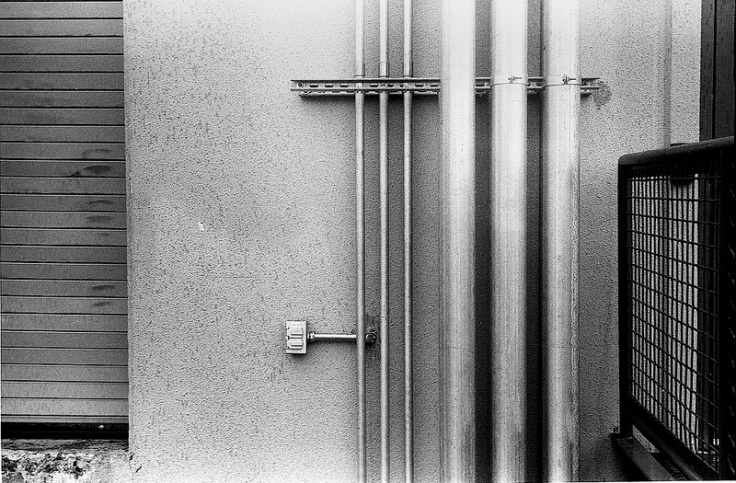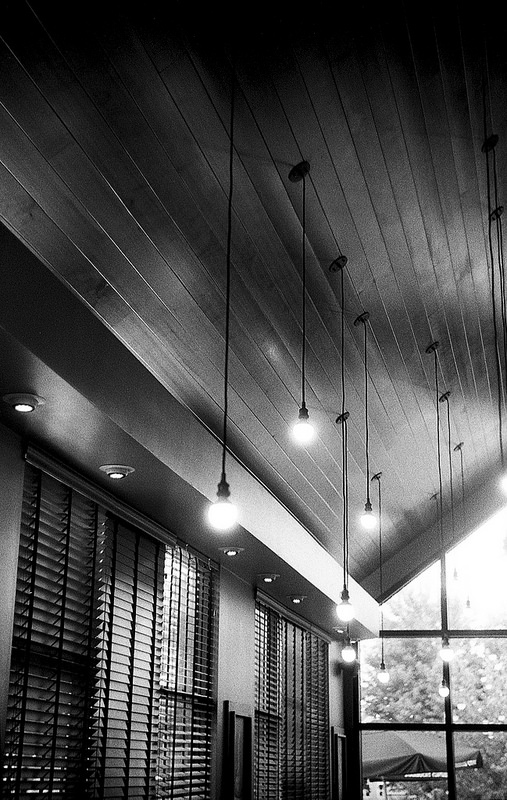I stopped into my local camera repair shop last week to retrieve my Leitz Summarit which got damaged during my family trip to Disney earlier this year. Lev, the shop-owner told me that he had something I might be interested in. He brought out a little black Barnack Leica and I tried my best to keep cool but I’m sure he could see right through my act!

Originally, black Leica cameras were considered “economy models”, whereas the chrome bodies were more costly due to the durability of their finish. Ironically, in the 21st century, black paint bodies have become more fashionable. When you buy a new Leica MP, for example, the black model costs the same as the chrome model, despite it being a much more easily damaged and easier to apply finish. And when it comes to vintage Leica cameras, black bodies almost always carry a premium.
Collectors pay top dollar for nearly unworn black bodies but for me, well-brassed black bodies are more desirable.

Personally, I love to see vintage black cameras on which the enamel is worn in all the places a shooter handled it, not from abuse or damage, but purely from regular use. The shiny brass peeking through the black paint seems to punctuate the silhouette of a classic camera and speaks of how the camera has been used, and hopefully enjoyed, for decades. Worn paint can tell you if the shooter used the camera on a tripod frequently or if the camera was mostly handheld. If they used accessories or not. Sometimes what settings were used more than others. And overall, you can see how MUCH the camera was used by wear to necessary places such as the film advance and edges. It’s proof that an historic camera participated in history, not just watched from the sidelines.

So anyway, needless to say, I bought the I/III from Lev. He gave me a very good price being that I’ve frequented his shop for pushing two decades now!
Maybe you’re wondering why I’m calling this camera a I/III instead of a I or a III? I will get to that!
According to its very low serial number, 21820, this black beauty was built in 1930 as a Leica I (C). It did not originally have rangefinder focusing but it was the first year for Leica I’s to have standardized interchangeable lenses.
Previously, every lens had to be calibrated to match a specific camera body. You couldn’t run around buying and selling additional lenses, as we do now, without time-consuming assistance from Leica. This universal interchangeability is indicated by the “0” engraved on the lens mount. This was a very pivotal moment in Leica and camera history because it opened the door for the massive, nuanced, seemingly endless, lens systems we see today.

Around 1935, this already groundbreaking Leica I (C) was returned to the Leica factory in Wetzler, Germany for some serious upgrades.
It received strap anchors, slow shutter speeds and, of critical note, the rangefinder mechanism of Leica II and III bodies. This was the rangefinder focusing system that Leica would become known for and which would propel photography into modernity with the ability to use faster lenses with shallow depth of field and fast, accurate focusing. This camera was on the forefront of contemporary photography as we know it! Need I begin reciting all the reasons why Leica revolutionized photography? Well, this camera embodies that revolution!

Back to the earlier question though, because this Leica I (C) was converted to a III and is not an original I (C) or an original III, we call it a I/III conversion. Shout out to Leica expert and amazing photographer, Vince Lupo for putting a name on this concept for me!
Note that this Leica I/III features glossy black paint only on the top and bottom plates but all the controls are unpainted. The shutter release and collar are chrome but the strap anchors, advance knob, shutter dials and rewind knob are all finished in nickel, not chrome. So unlike something such as a black Nikon F which has the same “leftover” chrome controls as a chrome F, the I/III actually has different controls than a chrome body, specifically finished for this camera. Nickel finishes were also not as durable as chrome and wore down to the brass more quickly. However, nickel is a bit more unusual a finish and has a nice champagne-tinted warmth to it.

My I/III came equipped with a 5cm f2 Summar which was built in 1935. It is also finished in nickel to match this older body at a time when Leica’s new lenses and bodies were finished in chrome only. It’s cool that this special lens and body have probably remained together for 82 years!
50/2 lenses may seem pedestrian today, but the Summar was a super fast lens in the 1930’s and it was apparently on back order for most of 1932 according to Ken Rockwell. The newly fitted rangefinder got a workout with this fast lens!

Between its generous brassing, upgrade to a faster lens and rangefinder focusing, it’s easy to see that this I/III has always been a user, never a shelf queen. And in fact, the VF/RF windows are beautifully clear and shutter speeds from 1 second to 1/500th sound dead on. It has probably been in use most of its life and I will continue that tradition!
It’s nothing short of inspirational to shoot with this low serial number I/III while considering all its been through. Below are a few images I’ve shot with the I/III and Summar lens on Tri-X, processed in HC110b.




Thanks so much for reading!
Follow, Favorite, Like, Add, Contact Johnny Martyr


A lovely ode to your camera. Respect to you for seeking out the well-loved (brassed) example.
LikeLike
Thanks so much for reading Jim! Is it time for a Barnack Leica for you next?
LikeLike
Oh, hard telling. I’m having too much fun with my Pentaxes right now.
LikeLike
Hey, whatever blows your hair back!
LikeLike
Wow! What a beautiful survivor. Good job that you are using it too!
LikeLike
Thanks Jon! I feel honored each time I take a shot with the I/III. Do you shoot with Leica gear?
LikeLike
If you like brassing, what about this Lenny Kravitz-designed pre-brassed monster? http://www.leicashop.com/vintage_en/leica-m-p-correspondent-by-lenny-kravitz-sku30319-1.html
LikeLiked by 1 person
Ha, I saw that when it was released. Nice thought but I’m a natural brasser!
LikeLike
HI I HAVE A LEIC camera model 1c from 1930 in excellent working condition for sale if interested contact me.JOE
LikeLiked by 1 person
Sounds great, Joe! I would recommend listing on Facebook Marketplace as well as in the Leica screw mount groups.
LikeLike
My first Leica was a 111f. It is the reason I first learned to develop film and start a darkroom. That was 50 years ago. I have owned and used numerous cameras over the years, every film size up to 8X10. No Leica at present…a Pentax K-1 with two “Limited” lenses and a Nikon S3 with 3.5, 5, 10.5. That’s all I need at present (a flatbed scanner of course). If you are in Austin, check out the great people at Holland Photo for processing needs.
LikeLiked by 1 person
Nice article. Bringing up many memories of Leicas my dad once was using. 😉
LikeLike